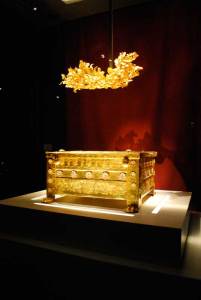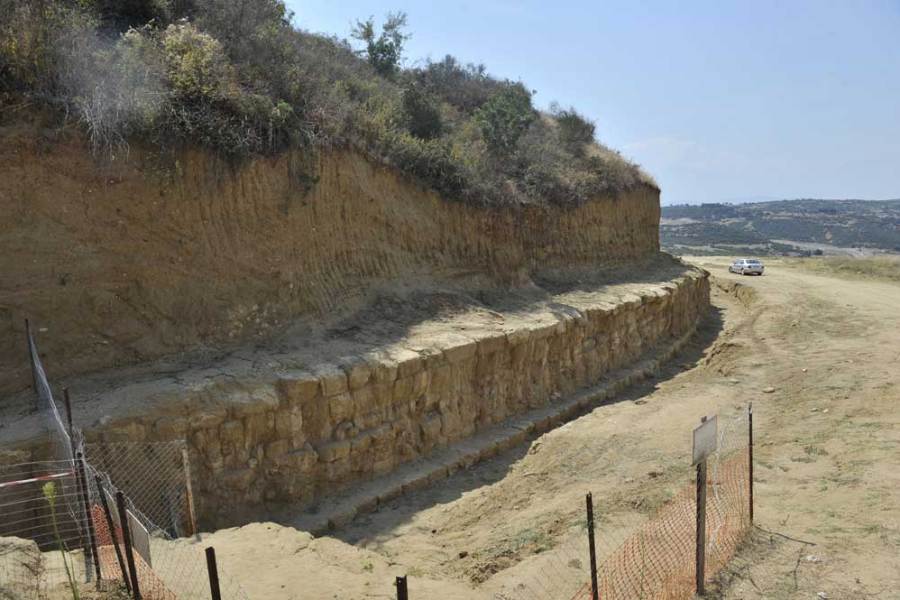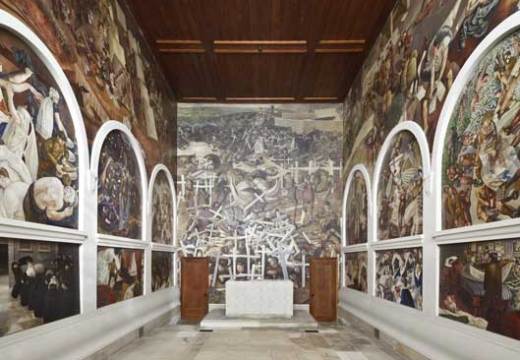The discovery by archaeologists of a tomb at the ancient site of Amphipolis in northern Greece has potential to be of significant art-historical importance. Dating to c. 300 BC, it is possible that it may have held the body of one of Alexander the Great’s generals or perhaps a member of his family.
The tomb was found beneath a burial mound to the north of modern Thessaloniki in Greece’s northern Macedonian region, the area from which Alexander originated. Approached by a grand 4.5 m wide road, its entrance was flanked by two marble sphinxes; the mound itself is bordered by a 497 m long wall of marble panels. These impressive external features showcase the wealth and importance of the deceased and hint at the possible grandeur of what may be contained inside.
Ancient Amphipolis was founded as an Athenian colony in 437 BC but was later conquered by Philip II of Macedon, Alexander’s father, in 357 BC. Alexander’s generals are known to have had links to the area, while Amphipolis is also the place where his wife, Roxana, and son, Alexander IV, were killed in 311 BC by Cassander, a Macedonian general who seized power in Macedonia following Alexander the Great’s death and the collapse of his empire.
Katerina Peristeri, head of the department for ancient monuments in northern Greece, believes that the mound was originally topped by a large marble lion unearthed over a century ago near to the tomb site. The lion has historically been associated with Laomedon of Mytilene, another of Alexander’s generals who became governor of Syria following his death. Speculation as to who is in fact buried inside the tomb will hopefully be addressed when archaeologists finish their excavation in the coming month.

Golden larnax of Philip II of Macedon (382–336 BC) found and exhibited in Vergina, Greece. Photo: Sarah Murray (via Flickr)
The tomb is the largest yet discovered in Greece, and on the evidence of its size and exterior adornment, may contain potentially important artefacts for the study of Hellenistic art, especially if it proves to be undisturbed. Four burial chambers discovered in 1977 at nearby Vergina, ancient Aegae, and a further three found in 1980 are believed to be the tombs of the Macedonian kings, including Alexander’s father Philip II of Macedon. Alexander himself is believed to have been buried in Egypt. These tombs contained rich burial finds including a marble sarcophagus, a gold coffin, known as a larnax, jewellery and sculpture, and an extraordinary gold wreath in the form of entwined oak branches, complete with delicate golden acorns.
The Vergina tombs also contained rare examples of wall paintings from the 4th century BC, of which precious few survive. Though faded and fragmentary, these frescoes depicting both mythological and biographical scenes remain full of vital energy. On the interior wall of Tomb I, a muscled Hades with wild beard and flowing hair abducts a distraught Persephone, whose soft white body desperately reaches out to us as the god pulls her into his chariot. Meanwhile, a lion hunt has been painted above the entrance to Tomb II: the narrative is busy with multiple figures some on horseback, some on foot, some viewed from behind and deftly foreshortened, all caught mid-action. At the centre of the scene, a young man on horseback takes aim with his spear: many believe this to be the earliest depiction of Alexander the Great.
Archaeologists will surely be hoping for similar finds to emerge at Amphipolis to add to our knowledge of Hellenistic art.
Unlimited access from just $16 every 3 months
Subscribe to get unlimited and exclusive access to the top art stories, interviews and exhibition reviews.














![Masterpiece [Re]discovery 2022. Photo: Ben Fisher Photography, courtesy of Masterpiece London](http://www.apollo-magazine.com/wp-content/uploads/2022/07/MPL2022_4263.jpg)
It’s time for the government of London to return to its rightful home